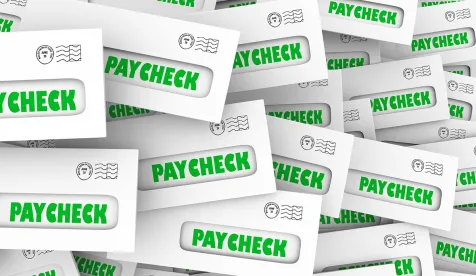On June 5, 2020, the president signed into law the Paycheck Protection Program Flexibility Act (PPPFA). The act is intended to provide additional flexibility on the use of Paycheck Protection Program (PPP) funds in order to maximize forgiveness and to make some additional limited changes to the CARES Act (under which the PPP was initially enacted).
This article is intended to provide a general summary of the changes to the PPP made by the PPPFA. As there are several items that need clarification, we fully expect the Small Business Administration (SBA) to issue further guidance and revise its existing guidance on the implementation of these changes. We will continue to provide updates on how to take advantage of the PPPFA as that guidance is released.
24-Week Covered Period with Option to Keep the Eight-Week Period
For those that have not yet applied for PPP funds, the covered period has been extended to begin on the date that a borrower receives its PPP funds and conclude 24 weeks later, or December 31, 2020, whichever occurs first. Borrowers that have already received PPP funds will have the option to use the 24-week covered period or keep the covered period at the original eight-week period previously set forth under the PPP.
This is good news as it gives borrowers more time to get their businesses up and running, however, borrowers need to be careful that extending the covered period does not create issues regarding forgiveness.
The 75/25 Rule Is Now the 60/40 Rule
The PPPFA has eliminated the SBA rule that no more than 25 percent of the loan forgiveness amount may be attributable to non-payroll costs. In its place, the PPPFA provides that in order to receive loan forgiveness, at least 60 percent of the loan amount (as opposed to the amount of loan forgiveness) must be used on payroll costs and no more than 40 percent may be attributable to non-payroll costs. Note that the new 60/40 rule provides for a strict application, meaning that if a borrower does not use at least 60 percent of the loan amount on payroll costs, such borrower will not be eligible for any forgiveness. This is an all or nothing rule. Please note that despite these changes, the requirement to maintain a borrower's average monthly FTE amount and annual average salary or hourly wage employees at no less than 75 percent of the base salary or hourly wage received by that employee during the period of January 1, 2020 to March 31, 2020 remains in place.
June 30 FTE Safe Harbor Extended to December 31
A borrower that rehires or replaces workers who were previously laid off will be exempt from the reduction in loan forgiveness during the eight-week or 24-week covered period provided that 1) such employee reduction occurred between February 15, 2020 and April 26, 2020, and 2) the borrower restored its FTE employee levels by no later than December 31, 2020 to its FTE employee levels in the borrower's pay period that included February 15, 2020. As long as on December 31, 2020, the FTE and salary levels are returned to the same level as they were on February 15, 2020, there will be no reduction of forgiveness.
New Safe Harbor for Inability to Rehire or Restore FTE Due to Regulatory and Guidance Compliance
The PPPFA provides for an additional FTE Reduction Safe Harbor whereby any reduction in forgiveness based on a reduction in FTE will be disregarded in the event a borrower is able to document that:
-
It was unable to rehire individuals who were employees on February 15, 2020 and unable to hire similarly qualified employees for unfilled positions on or before December 31, 2020, or
-
It was able to document its inability to return to the same level of business activity as it was operating at before February 15, 2020, due to compliance with requirements established or guidance issued by the Secretary of Health and Human Services, the Director of the Centers for Disease Control and Prevention, or the Occupational Safety and Health Administration during the period beginning on March 1, 2020 and ending December 31, 2020, related to the maintenance of standards for sanitation, social distancing, or any other worker or customer safety requirement related to COVID-19.
While the first safe harbor had been articulated in the SBA's forgiveness application, the latter safe harbor is new and is likely to result in additional guidance.
Loan Repayment Period Extended to Five Years
The PPP provided that the period to repay loans would be two years. The PPPFA has extended the repayment period to five years for those loans that are issued after the date of the PPPFA. Existing PPP loans can be extended up to five years if the lender and the borrower agree. In addition, the first payment would be deferred until such time that the forgiveness is granted by the SBA and remitted to the borrower's lender.
Payroll Tax Deferral
The PPPFA allows borrowers that took a PPP loan to be able to defer payment of their payroll taxes (the employer's 6.2 percent portion of 2020 Social Security taxes). As such, regardless of whether or not forgiveness is granted, borrowers will have the ability to defer their share of payroll taxes for 2020.





 />i
/>i
